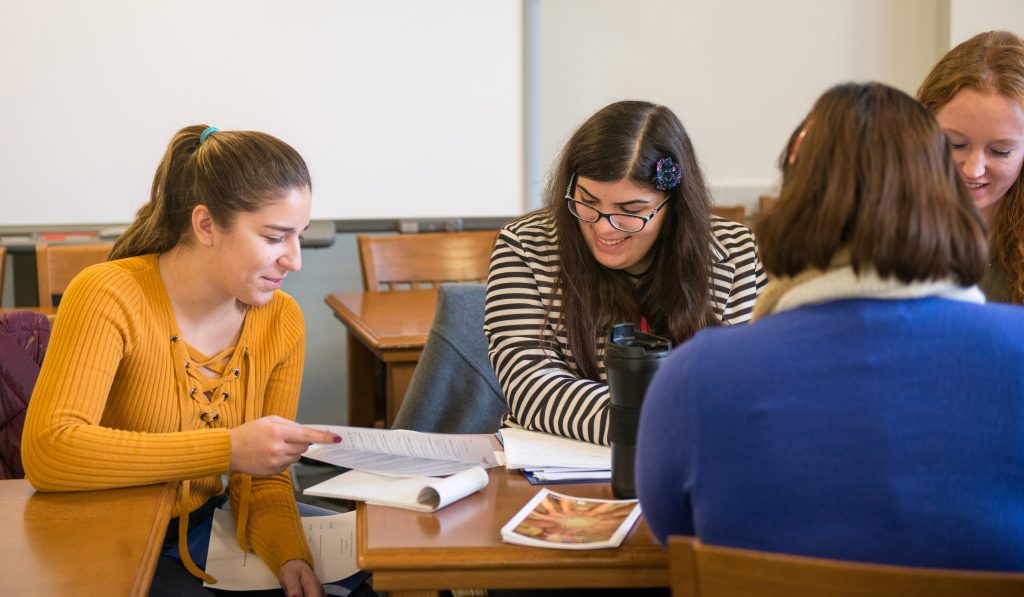Impact on Retention: Users of the Center for Student Success Services
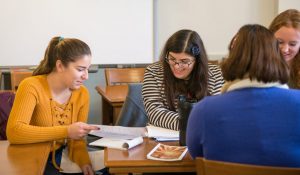 Contributed by Dante Cantu
Contributed by Dante Cantu
In 2016 the College’s Center for Student Success (CSS) was revamped in order to align with the goals of the strategic plan. An impact analysis was recently performed by the Office of Institutional Research (OIR) to evaluate the effectiveness of CSS’s services and mission, which states: “The Center for Student Success promotes student learning, academic engagement, and timely degree completion through the coordination of peer-based academic support programs….”
The analysis used the CSS’s student utilization data, captured through its online scheduling and tracking system. Two years of CSS student data were merged with the 2017 and 2018 first-year cohort student data (students who started at New Paltz as first-time college students). Within those first-year student cohorts, 28% of the fall 2017 first-year cohort used the CSS peer-based academic support services and 23% of the fall 2018 first-year cohort used the CSS services.
| Visited CSS | Did Not Visit CSS | |||
| Entry Semester | N | % | N | % |
| Fall 2018 | 263 | 23% | 889 | 77% |
| Fall 2017 | 313 | 28% | 809 | 72% |
Students who visited the CSS were nearly twice (1.75) as likely to be retained compared to students who did not visit the CSS (significant at the p<.05 level).
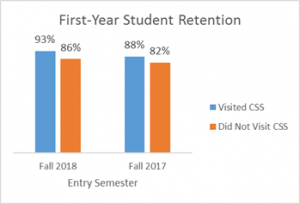
Students who visited the CSS were compared to students with similar characteristics who did not visit the CSS to see if there were any differences in demographic attributes. Findings revealed there was no statistical difference between the two groups relative to high school GPA, workload (credits), first semester, first-generation, and Pell recipient (for non-EOP students). Statistical difference was, however, revealed as follows:
- Were more likely to be female
- Were more likely to be from a historically underrepresented minority (URM) group
- Were more likely to be EOP
- Had lower mean SAT scores
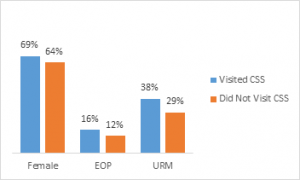
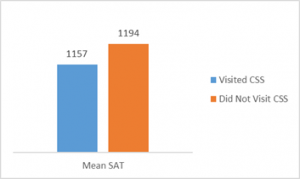
SPSS Case-Control Matching
Combining the 2017 and 2018 data of the 530 first-year students who visited the CSS in 2017 and 2018, there was a match between 463 students on the following variables: first generation, gender, EOP, Pell recipient, SAT (or ACT converted, ±50), high school GPA (±5), and from a traditionally URM. Comparing the retention rates for the CSS matched students with the control group, the difference in retention rates was significant at the p<.005 level.
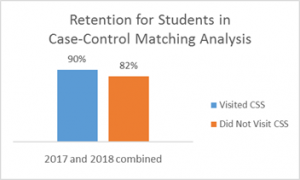
These early findings appear to support the effectiveness of the CSS’s services and mission. They also indicate that students are achieving educational success. The CSS continues to refine its academic support programs based on rigorous and ongoing assessment.

